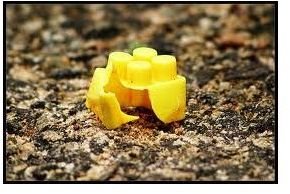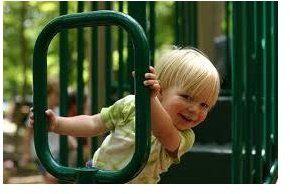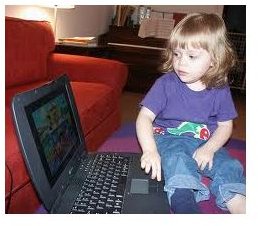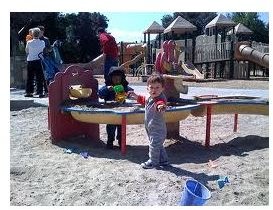Excellent School Environment for Toddlers Criteria of Care
Childcare and Education Quality for Toddlers
Research has shown that the qualitative provision of childcare has a definite impact on children’s developmental outcomes and that good childcare provision can positively enhance children’s development and learning. While many early years or preschool settings accommodating toddlers have to meet a number of minimum national standards of care and education, not so many can actually testify for all around provisional excellence. However, what exactly are excellent school environment for toddlers criteria?
Standards of Care: Child-Staff Ratio
Toddlers require more attention than do older children, and therefore, the child to staff ratio needs to be lower in toddlers’ classrooms than in older children’s classrooms. Toddlers are not yet as physically independent as older children. Help with toilet training, getting ready for outdoor play, eating, washing their hands and carrying any other activities require more adult support than is required for older children. Also, their motor skills’ development is not as advanced as older children and that makes them more vulnerable and prone to accidents, which is why they require extra adult supervision. The NAEYC (National Assotiation for the Education of Young Children) suggests that toddlers’ classroom should be limited to 12 toddlers and the following child to staff ratio:
- Toddlers 12 to 28 months: 1 teacher- 4 toddlers; 2 - 5 to 8; 3 - 9 to 12
- Toddlers 21 to 39 months: 1 - 6; 2 - 12
The state suggested ratio for both age groups of toddlers is 1 to 7. Any toddlers’ educational providers should take the latter into consideration in their quest to offer excellent standards of care.
Standards of Care: Health, Safety and Hygiene
There are a few things to consider as far as health, safety and hygiene issues are concerned in any environment for toddlers. First of all, is the entrance to the setting secure?
Second, all staff working in an early years setting should be CRB (Criminal Record Bureau) checked for the prevention of abuse.
Third, the classroom should be a safe place for toddlers. Furniture should be arranged in a way, which minimizes the risk of accidents because toddlers easily fall over. Chemicals and cleaning products should be kept out of reach of toddlers who tend to put everything in their mouth. Craft materials should be stored securely and used by toddlers under teachers and other staff’s supervision during set times.

Fourth, toys should be checked regularly for safe use purposes and anything broken should be disposed of. Equipment and materials for the use of toddlers should be toddler friendly, taking into account their physical capabilities. (Age appropriate toys, child-sized chairs, tables, toilets and so forth are recommended).
Fifth, every early years setting should maintain a good standard of environmental cleanliness and hygiene at all times. Health and hygiene practices go beyond general household cleaning. The sterilizing of toys and play equipment, for example, can help prevent potential diseases from spreading. Ideally, this should be done as often as possible, even when the latter are clean in appearance. Governments’ recommendations make this necessity clear and recommend that early years’ care and education providers to make ’the sterilizing of toys’ an integral part of their setting’s policy.
Sixth, there should be a separate room dedicated to nap time with adequate sleeping facilities for toddlers. There should also be an area designed for changing diapers (nappies) and potty training, ideally in the toilet area. Hygiene routine to change and dispose of soiled diapers (nappies) should be observed at all times, and staff should wear appropriate apron and gloves when dealing with toddlers’ toilet mess.
These standards of care are crucial for early years settings wishing to meet excellent school environment for toddlers criteria.
Standards of Education: Teaching and Behavior Management
Teaching toddlers can be daunting. Their developmental stage is characterized by the following potential behavior:

lower attention spans, tantrums and lack of abstract reasoning (concrete thinkers). Excellent teachers for toddlers must be fully aware of these stages and strive to adopt developmentally appropriate practices in order to adequately reach and teach toddlers.
Behavior management should be dealt with consistently, and the methods used provide an opportunity for toddlers to learn. Teachers should utilize positive behavior management methods rather than repressive ones. Toddlers, like older children, love rewards and praise. These should be used consistently to reward good behavior and illustrate what is expected as acceptable behavior in the toddlers’ classroom.

Early years settings’ teachers often hold lower qualifications than school children teachers. Early childhood researchers agree to a great extent that teachers’ qualifications to teach younger children should be higher; at least a bachelor degree level. Some studies have demonstrated that teachers with a higher education level dealt better with young children in early years settings and offered better quality teaching. Toddlers’ teachers, therefore, should be better qualified in early years settings determined to achieve an excellent school environment for toddlers criteria.
Standards of Education: Curricula and Learning Opportunities
Early learning is significant in setting a solid educational foundation for further learning. Any curriculum for toddlers should be well rounded and take into account cognitive learning as well as personal, social and emotional development. Specifically designed and age-appropriate curriculum or national guidelines, usually drafted by the appropriate governmental education agency, can support teachers in planning and delivering appropriate lessons or activities for toddlers.
Although toddlers should be given opportunities to experience a variety of new learning, they are too young to undergo a learning routine that is too structured and formal. Toddlers learn best through play. Curriculum requirements should respect that.

Toddlers also learn better by doing, therefore, hands-on activities should be at the core of lesson planning. Examples of free play

hands-on activities toddlers might enjoy include water play, sand play, sculpting with modeling clay, painting and so forth. Indoor settings should contain a wide range of toys and games learners can have a go at, including gross motor skills development equipment if space allows. Computers are offer a wide variety of online age-appropriate educational games for toddlers.
Outdoor play contributes huge benefits to toddlers’ health and learning. Outdoor access and design in any early years setting constitute an essential criteria of excellence.
Achieving Excellent Provision
Both standards of care and of education are crucial in early years provision, and attaining excellent school environment for toddlers criteria imply achieving highly in both. All the criteria covered here matter and may involve financial consideration as well as hard work. Governmental agencies such as Ofsted (Office for Standards in Education) in the UK have a duty to check and rate educational settings which must meet minimum standards for adequate provision. Rate of excellence get an ‘outstanding’ grade which often set these settings apart from the rest.
References
Cassidy, D. I., Buell, M. I., Pugh-Hoese, S. & S. Russell (2002) “The Effect of Education on Childcare Teachers’ Beliefs and Classroom Quality: Year 1 Evaluation of the Teach Early Childhood Associate Degree Scholarship Program”
Cole, P. (2010) “Keep It Clean and Healthy: Infection Control Guidance for Those Working in Childcare”
Copple, C. & S. Bredekemp (3rd ed) (2009) “Developmentally Appropriate Practice in Early Childhood Programs”
Department for Education and Families “Registration and Inspection”
Paulsell, D., Nogales, R. & Cohen, J. (2003) “Quality Childcare for Infants and Toddlers: Case Studies of Three Community Strategies”
Whitebook, M. (2003) “Bachelor’s Degrees are Best: Higher Qualifications for Pre-Kindergarden Teachers Lead to Better Learning Environments for Children, a Review of the Research Prepared for the Trust for Early Education”
Photo Credits
Broken Lego by Ibrahim Nafih https://www.flickr.com/photos/inafih/2342250437/
CRB application form by Matthew https://www.flickr.com/photos/purplemattfish/4188530981/
Toddler Playing outside by Jessica Lucia https://www.flickr.com/photos/theloushe/3576530805/
Graduate by Luds Kadimba
Toddler on computer by Crimfant https://www.flickr.com/photos/crimfants/297864205/
Toddler sand play by Jessica Merz https://www.flickr.com/photos/jessicafm/2428823836/
